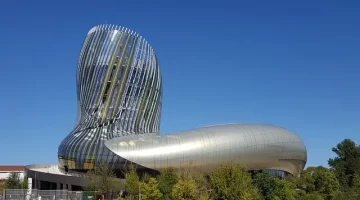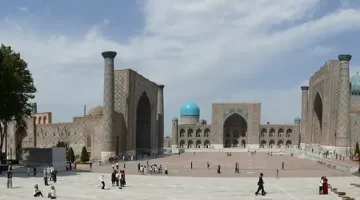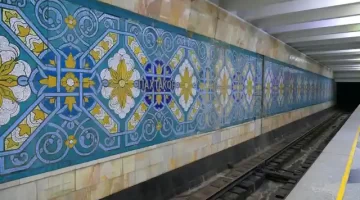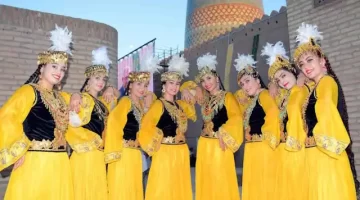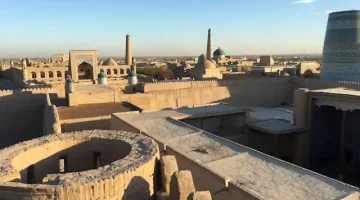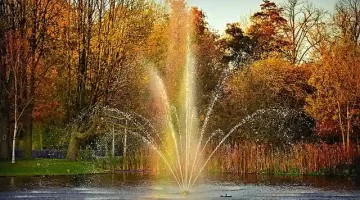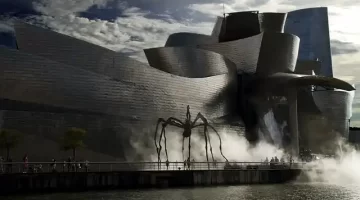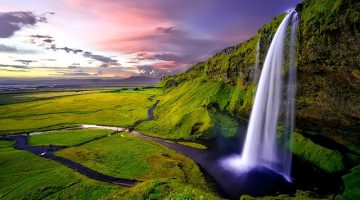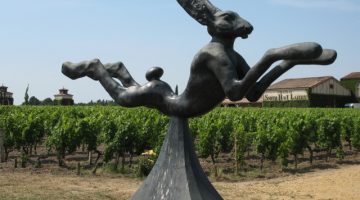Matmata
The cave homes in the village of Matmata in southern Tunisia are like something from outer space and have been used as film sets for Star Wars and other movies.

This village in southern Tunisia, on the way to the Sahara Desert, is like nothing you have ever seen before. Some of the villagers live underground in homes carved out of the lunar landscape, and have done so for over 700 years. The only sign of modern living is that in some of the homes TV aerials seem to pop up out of the ground!

Matmata Temperatures
The Matmata people are Berbers, who have dug out their homes in this way mainly to protect them from the harsh extremes of the climate. In summer the houses are cool when outside temperatures can soar well past the 50C/120F mark, and in winter when night-time temperatures fall towards freezing, they can keep themselves snug and warm. The incredibly thick walls keep the temperatures inside at a fairly constant and comfortable 62F/17C. The houses were also good defences against possible invaders.
It’s astonishing to witness people still living like this in the 21st century, but the tradition is inevitably slowly dying out as young people move to the coast and the cities, and to overseas, to seek work. If they do return to their home village they often want to build themselves a modern house with all the creature comforts.
New Matmata
There is a modern village several miles away called Matmata Nouvelle, or New Matmata. No doubt the houses in the old village will continue as a tourist attraction so that visitors can see this traditional way of life, but at the moment you are still visiting homes where people live.

Visiting Matmata
Several families make their homes available to the public, and are happy for groups to descend on them during the day. It must be a strange feeling to have a few dozen foreigners poking around in your house and peering into the kitchen, but no doubt the dinars they receive help compensate for the intrusion. You may find some of the women putting on weaving demonstrations, or you may just find them cooking lunch, but whichever house you visit and whatever the people happen to be doing, it will be a memorable experience that you will certainly want to photograph (though do ask permission first).
Each house is usually built around a central courtyard, which you reach through a small door. Most of them have signs painted by the door in blue, like a hand or a fish, to ward off evil spirits. The living quarters are built off the central courtyard, and are kept spotlessly clean, with whitewashed walls and little cupboards and shelves carved out of the rock.

Some of the homes are double-deckers, with the upstairs rooms reached by climbing a ladder or just a piece of knotted rope. Some homes have several families and therefore have several inter-connected courtyards, and if you don’t happen to visit one of these you can get an idea of what they are like at the three underground hotels in New Matmata, where tour groups often have their lunch.
Some families do have water and electricity supplies, and the TV aerials are obviously evidence of which ones are connected to the electricity supply.
Matmata Travel Tip
As usual, have some small change ready. The people who live in these underground houses will expect a few dinars as you pass through, especially if you want to take photographs of them, which they are usually perfectly happy with.
Tunisian Olives near Matmata
On the way to Matmata you pass the amazing sight of one of the largest olive groves in Tunisia. It contains over two million olive trees, and is roughly twenty miles (32 kms) long and about six to eight miles (10-13 kms) wide. The crop is harvested in the winter, with each tree producing around 80 lbs (36 kgs) of olives, which in turn make 8 litres of olive oil (17 US pints). Tunisia is the third largest grower of olives in the world, after Italy and Spain and ahead of Greece and Portugal. Many of the olives and much of the oil used to be exported to Europe, till the advent of the European Union, and now a lot of it goes to the USA.

Movies in Matmata
Many international movies have been shot on location in Tunisia, and the first Star Wars film used the bleak and unusual landscape around Matmata for some of its locations. The southern deserts were the setting for The English Patient, which resulted in a boost to the country’s tourism. In Monastir a studio complex was set up by a relative of President Bourgiba, and this has been used to make a great number of films including Roman Polanski’s Pirates, Zeffirelli’s Jesus of Nazareth, and Monty Python’s Life of Brian.
OUR TUNISIA GUIDE
This Travel Guide to Tunisia is by award-winning travel writer Mike Gerrard. The guide covers Tunis, Carthage, Sidi Bou Said, archaeological sites like Dougga, excursions to the Sahara Desert, and all the main Tunisian beach resorts and tourist towns.
Amazon 5-Star Reviews
‘Interesting information straight to the point and informative, I like the mix of tourist information and cultural knowledge and it is not a lengthy read, just enough to inform you about Tunisia.’
‘Very useful information including things to see and do and even how to avoid local pit falls good overview of all the areas.’
‘Very useful guide for visiting Tunisia and very good value for the money. I found the book to be very informative.’
Read more on Amazon or click on the cover.

